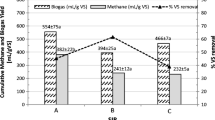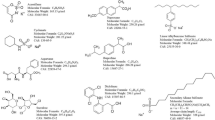Abstract
Several screening methods at the so-called ready biodegradability level are suitable to test poorly soluble substances. Typical for these tests is that mineralization is evaluated from monitoring oxygen uptake or carbon dioxide production. Unfortunately, they suffer from a rather low precision in the calculated percentage of mineralization caused by subtracting a too high inoculum control measurement from the response in the test system. Criteria for blank oxygen consumption, due to the metabolic activity of the inoculum, are proposed from which maximum amounts of activated sludge or secondary effluent per litre test medium can be derived to be used as an appropriate inoculum. Both for current and future standardized tests the precision of the method can be kept within acceptable margins. Inoculum material was sampled from 40 communal biological waste water treatment plants. From endogenous respiration rates it was derived that the concentration of secondary effluent in the Closed Bottle Test can be increased up to 50 mL/L but that in respirometry tests inoculated with activated sludge the appropriate concentration is 10 mg/L dry matter or below, depending of the design of the test system.
Similar content being viewed by others
Abbreviations
- BOD:
-
biological oxygen demand
- CBT:
-
Closed Bottle Test
- C as :
-
inoculum concentration in mg dry solids of activated sludge per litre test medium
- C ef :
-
inoculum concentration in ml secondary effluent per litre test medium
- C ss :
-
dry weight content of activated sludge (g/L)
- CFU:
-
colony forming units
- DO7d :
-
dissolved oxygen concentration (mg/L) after 7 days
- ISO:
-
International Organization for Standardization
- NEN:
-
Dutch Organization for Standardization
- O c :
-
oxygen capacity in mg oxygen per litre vessel volume
- OECD:
-
Organisation for Economic Co-operation and Development
- Ox as :
-
oxygen consumption after one week in mg oxygen per mg dry weight activated sludge
- Ox ef :
-
oxygen consumption after one week in mg oxygen per mL secondary effluent
- Ox ef [n]:
-
oxygen consumption after one week in mg oxygen per n mL secondary effluent
- Ox flask :
-
oxygen uptake in mg per litre flask volume
- RBT:
-
Ready Biodegradability Test
- SLR:
-
sludge loading rate in kg O2/kg dry weight·d
- ThOD:
-
theoretical oxygen demand
- TPCBT:
-
Two Phase Closed Bottle Test
- V a :
-
volumes of air and water per litre vessel
- V w :
-
volume, respectively
- ρ a :
-
concentration of oxygen in air at 20° C and 101.5 kPa
- ρ s :
-
saturation oxygen concentration in te aqueous phase
References
Birch RR & Fletcher RJ (1991) The application of dissolved carbon measurements to the study of aerobic biodegradability. Chemosphere 23: 507–524
Blok J (1979) A repetitive die away (RDA) test combining several biodegradability test procedures. Int. Biodeterior. Bull. 15: 57–63
CEC (1985) Degradation/Accumulation Sub-Group, Ring Test Programme 1983–1984, Assessment of biodegradability of chemicals in water by manometric respirometry, Final Report (Painter HA & King EF). H.A. Painter, Freshfield Analysis Ltd., Caxton Villa, 14 Park Lane, Knebworth, Herts SG3 6PF, UK
EC (1984) 84/449/EEC Directive, Annex Part C: Methods for the determination of ecotoxicity
-- (1992) 92/69/EEC Directive, Annex Part C: Methods for the determination of ecotoxicity
Gerike P & Fischer WK (1979) A correlation study of biodegradability determinations with various chemicals in various tests. Ecotoxicol. Environ. Saf. 3: 159–173
Gerike P & Fischer WK (1981) A correlation study of biodegradability determinations with various chemicals in various tests. II Additional results and conclusions. Ecotoxicol. Environ. Saf. 5: 45–55
King EF (1981) Notes on water research, biodegradability testing, WRC No 28 (August 1981)
Madansky A (1988) Prescriptions for working statisticians. Springer Verlag, New York
NEN 6515 (1992) Dutch standard. Determination of the biodegradability of organic chemicals by means of a two-phase air-water closed bottle test. June 1992
OECD (1981) OECD Guideline for Testing of Chemicals, Section 3- Degradation and Accumulation. Paris
OECD (1993) OECD Guideline for Testing of Chemicals, ‘Ready Biodegradability’
Painter HA & King EF (1985) A respirometric method for the assessment of ready biodegradability: results of a ring test. Ecotoxicol. Environ. Saf. 9: 6–16
Struijs J & Stoltenkamp J (1990) Headspace determination of evolved carbon dioxide in a biodegradability screening test. Ecotoxicol. Environ. Saf. 19: 204–211
Author information
Authors and Affiliations
Rights and permissions
About this article
Cite this article
Struijs, J., Stoltenkamp-Wouterse, M.J. & Dekkers, A.L.M. A rationale for the appropriate amount of inoculum in ready biodegradability tests. Biodegradation 6, 319–327 (1995). https://doi.org/10.1007/BF00695262
Accepted:
Issue Date:
DOI: https://doi.org/10.1007/BF00695262




